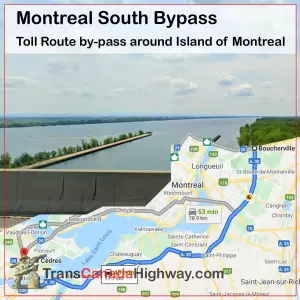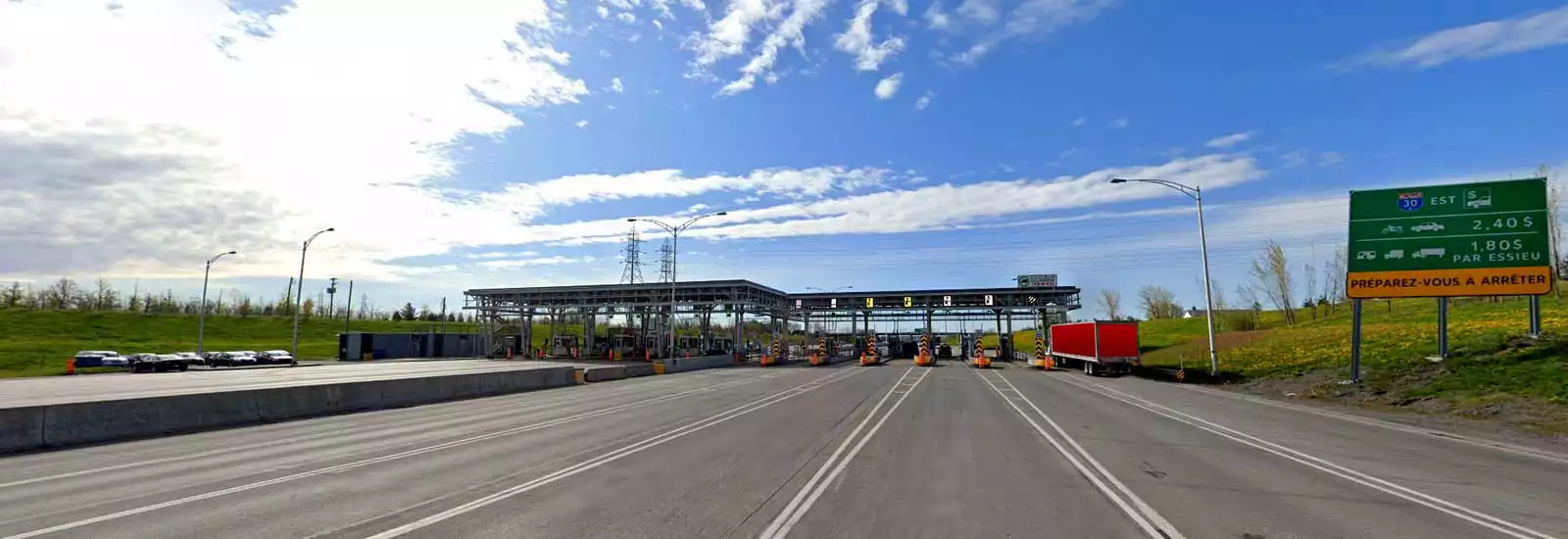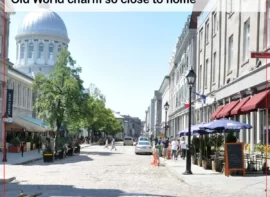Route History
Autoroute 30 (A-30) is also known as the Autoroute de l’Acier (which translated into English is “Steel Freeway”). The planning and construction of the A-30 goes back to the early days of autoroute construction boom in the 1960s.
It was originally called Highway 3, and was designed to replace Route 132 (which is a relaxed 2-lane road that connects small towns and villages along the south bank of the St Lawrence to — and around — the Gaspe Peninsula) as the main artery for communities along the Montreal South Shore of the St. Lawrence River.
The A-30 was originally intended to begin at the U.S. border at Dundee and end at Saint-Pierre-les-Becquets (in Centre-du-Québec). In the late 1970s an eight-year moratorium on new autoroute construction in favour of public transport by the Parti Québécois prevented implementation of that plan.
The first completed section of Autoroute 30 in 1968, started at Sorel-Tracy south to Route 116 (which was then called Highway 9). The A-30 was extended further south to an interchange with Autoroute 10 in Brossard by 1985 (to coonnect Montreal to the Eastern Townships) and to Autoroute 15 in Candiac by 1996 (which connected Montreal to the US border, and I-87 to Plattsburg and Albany, New York).
By 2006, the growing road congestion in and around Montreal led to the announcement of a federal-provincial partnership to complete A-30 as southwestern bypass ring road.
The initial expection was the Châteauguay to Vaudreuil-Dorion section was to be tolled, though in 2009 it was decided to collect tolls on a new bridge built over the St. Lawrence west of Beauharnois. A-30 was extended north of the St. Lawrence River with interchanges with A-20 (connecting Ontario’s 401 to Montreal) and with A-40 (connecting to Ontario’s 417 to/from Ottawa).
This was a massive construction project that included building two major bridges, 13 overpass bridges, 17 highway bridges, 11 interchanges, a 90-meter-long tunnel, a 14-lane toll plaza, and 42-kilometres of new four-lane highway. The major bridges included a 2.5 km one that clears the Beauharnois Canal on the St. Lawrence Seaway by 38.5 metres, and a 1.86km bridge over the St. Lawrence River. When it was built, the St Lawrence River bridge was the largest incrmentally launched bridge project in the world.
The full Autoroute 30 was opened to traffic in late 2012, enabling motorists travelling the Quebec City–Windsor Corridor to bypass the island of Montreal’s traffic and congestion (saving 45 minutes in travel time, more in rush hours).








